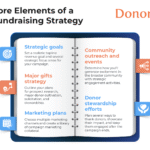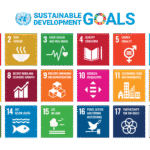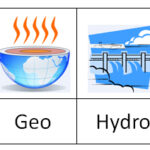The Best Study Methods to Boost Your Learning and Academic Performance
Finding the best study methods is crucial for anyone looking to improve their academic performance. Whether you’re in high school, college, or pursuing higher education, using the right techniques can help you understand, retain, and recall information more effectively. In this article, we’ll cover the top study techniques that have been proven to increase learning efficiency and improve exam results.
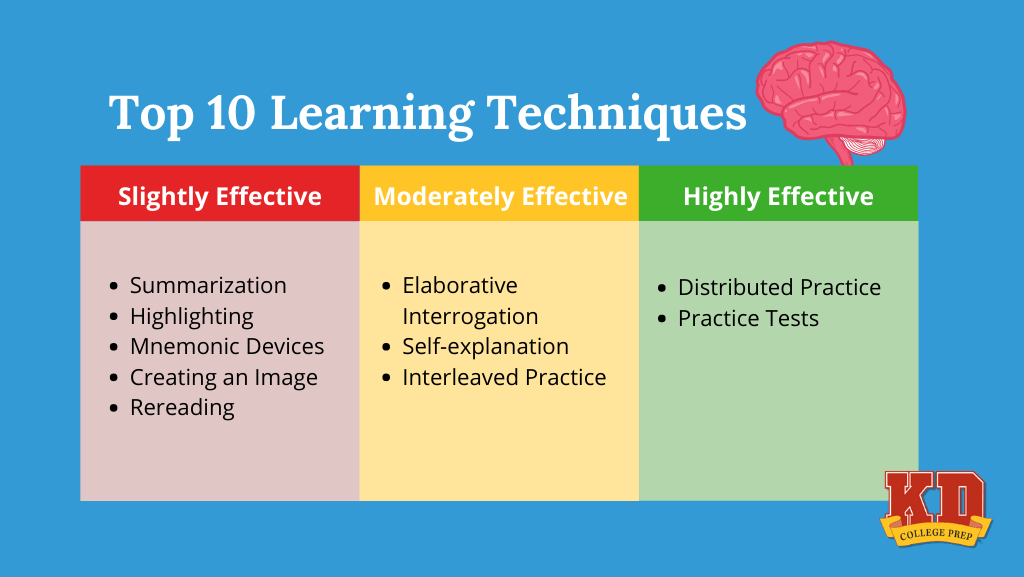
Why Choosing the Right Study Methods Matters
The right study methods are more than just time-savers—they’re also mind-boosters. The most effective study techniques help you maximize your learning potential. Without a structured approach, you risk wasting time on ineffective study habits that don’t yield results.
By adopting well-researched techniques, you can improve your focus, retention, and problem-solving skills. The best study methods ensure that you engage with the material in a way that suits your learning style and helps you retain information long-term.
1. Active Recall: Strengthen Your Memory
One of the most effective study methods is active recall. This technique involves testing yourself on the material instead of simply re-reading your notes. The idea is that actively retrieving information strengthens your memory and enhances long-term retention.
How Active Recall Works
To implement active recall, start by reviewing a concept for a few minutes. Then, close your book or notes and try to recall everything you remember. Writing down the information helps reinforce your learning. The key here is to test yourself repeatedly to ensure the material sticks in your memory.
Why It’s Effective
Active recall is a proven technique because it forces you to retrieve information from memory, which reinforces the neural connections that store the information. It’s far more effective than simply re-reading notes, as it strengthens your ability to recall information under pressure—something crucial for exams.
2. Spaced Repetition: Review Material Over Time
Spaced repetition is a study method that involves reviewing material at increasing intervals. Unlike cramming, this method helps you review information multiple times, spread out over a period of time. The idea is to revisit the material just before you’re likely to forget it, which ensures better long-term retention.
How Spaced Repetition Works
You can use apps like Anki or Quizlet to create flashcards that you review at set intervals. For example, you might review a flashcard after one day, then after three days, then after a week, and so on. By repeating this process, the information becomes embedded in your long-term memory.
Why It’s Effective
Spaced repetition taps into the spacing effect, a psychological phenomenon where information is more easily retained when reviewed at spaced intervals. It reduces the need for cramming, allowing you to retain knowledge with less effort.
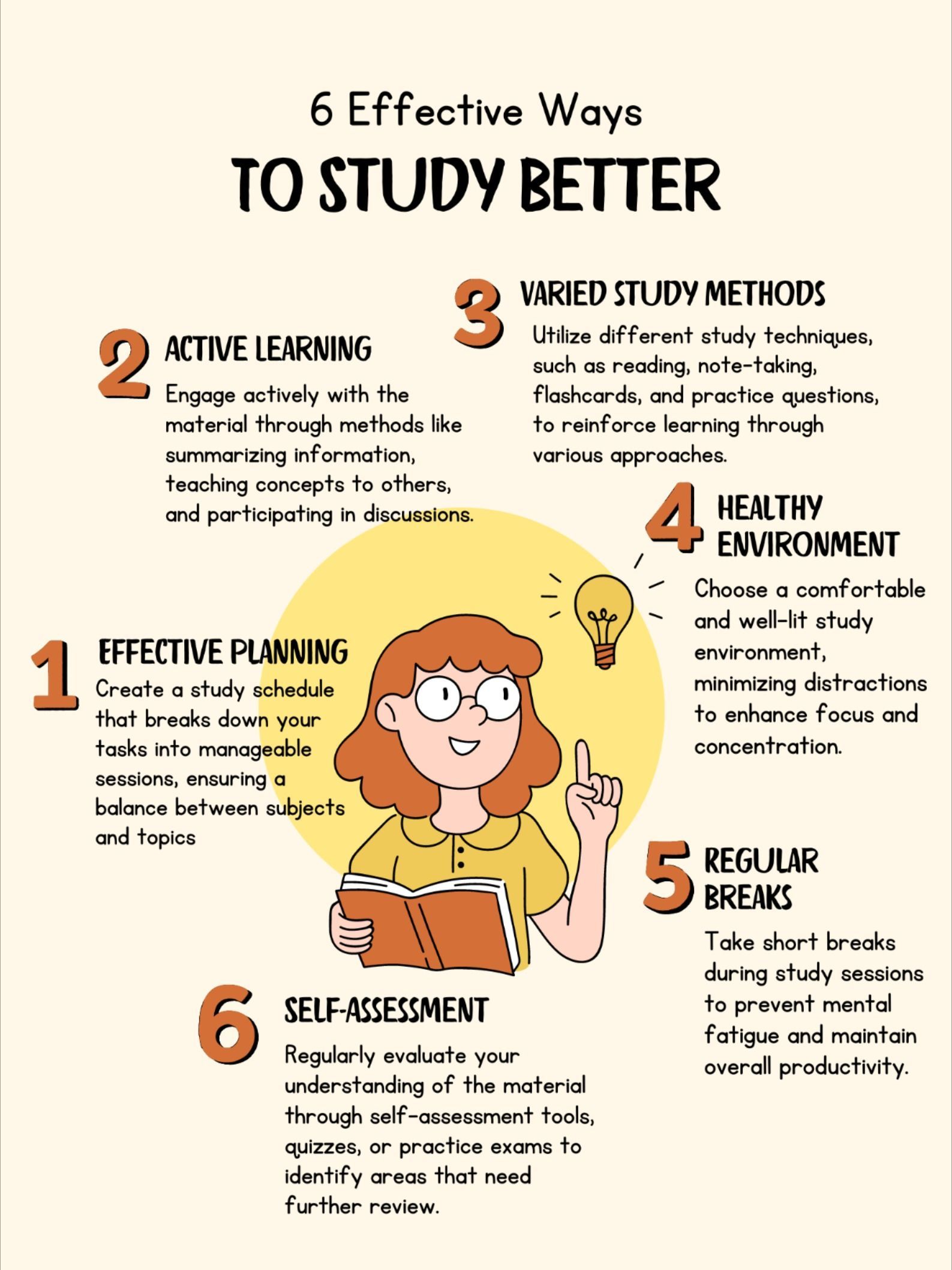
3. The Pomodoro Technique: Stay Focused and Productive
If you find it difficult to stay focused during long study sessions, the Pomodoro Technique can help. This method involves working in short, focused bursts followed by a short break. The goal is to maintain high productivity levels without burning out.
How The Pomodoro Technique Works
Set a timer for 25 minutes and focus solely on studying during that period. After the timer goes off, take a 5-minute break. After four “Pomodoros” (study intervals), take a longer break of 15-30 minutes. This technique helps break up the study time into manageable chunks.
Why It’s Effective
The Pomodoro Technique helps you maintain high levels of concentration by avoiding mental fatigue. Studies have shown that our brains can only focus for a limited period, so working in short bursts prevents burnout and keeps you motivated.
4. Mind Mapping: Organize Your Thoughts Visually
Mind mapping is a visual study technique that helps you organize ideas and understand complex concepts. It’s especially useful for subjects that require you to connect multiple ideas or concepts, such as history, science, or literature.
How Mind Mapping Works
To create a mind map, write the main concept in the center of a page, then branch out with related subtopics and details. You can use different colors, shapes, and lines to connect concepts visually. This helps you see the bigger picture and understand the relationships between ideas.
Why It’s Effective
Mind mapping encourages active learning by helping you visualize and connect information. It taps into the brain’s natural ability to understand patterns, making it easier to remember and recall concepts.
5. The Feynman Technique: Simplify to Understand
The Feynman Technique is named after physicist Richard Feynman and involves explaining complex topics in simple terms, as though you were teaching them to someone else. This technique helps identify gaps in your understanding and forces you to simplify ideas, making them easier to grasp.
How The Feynman Technique Works
Choose a topic you want to study, then write out an explanation of it as if you were teaching it to a young child. If you can’t explain certain concepts clearly, go back to your material and review those parts until you can explain them in simple terms.
Why It’s Effective
The Feynman Technique helps you identify and reinforce the most important aspects of the material. It also makes complex topics more accessible by breaking them down into simpler concepts. This method is highly effective for students in advanced subjects who need to master difficult concepts.
6. Active Note-Taking: Engage with Your Material
Active note-taking is another powerful study method. Instead of passively writing down everything the teacher says, focus on summarizing and engaging with the material. This technique encourages deeper processing, which helps retain information more effectively.
How Active Note-Taking Works
Use methods like the Cornell Note-Taking System, where you divide your page into three sections: notes, cues, and a summary. Write down the main ideas and key details during class, then use the cues section to jot down questions or important points to review later.
Why It’s Effective
Active note-taking keeps you engaged during class and helps you process information while writing. By organizing your notes in a structured way, it becomes easier to review and retain key concepts when studying later.
7. Teach What You Learn: Solidify Your Understanding
One of the best ways to reinforce your learning is by teaching what you’ve learned to someone else. When you teach, you’re forced to clarify your understanding, which can uncover gaps in your knowledge.
How Teaching Works
Explain the concept aloud to a peer, or even to yourself. The act of verbalizing your thoughts forces you to simplify complex ideas and ensures you’ve fully grasped the material.
Why It’s Effective
Teaching helps consolidate your knowledge and deepens your understanding. By breaking down complex topics and presenting them in a clear, understandable way, you reinforce the material in your own mind.
FAQs on the Best Study Methods
1. Which study method is best for memorizing information?
For memorization, spaced repetition and active recall are the most effective techniques. Flashcards are a great way to use these methods, allowing you to review and reinforce information regularly.
2. How can I stay motivated while studying?
Setting small, achievable goals, taking regular breaks, and using techniques like Pomodoro can help maintain focus and motivation. Additionally, reward yourself for completing study sessions to keep your energy high.
3. How long should I study at a time?
It’s important to study in intervals that match your attention span. The Pomodoro Technique recommends studying for 25 minutes, followed by a 5-minute break. After four intervals, take a longer break.
4. What is the best way to study for exams?
Use a combination of active recall, spaced repetition, and problem-solving to prepare for exams. Create a study plan well in advance and stick to it, reviewing material periodically rather than cramming.
Conclusion
The best study methods are those that help you engage with and retain information effectively. Techniques like active recall, spaced repetition, and mind mapping are proven to boost learning and academic performance. By incorporating these strategies into your study routine, you’ll not only improve your grades but also become a more confident and efficient learner.
Remember, it’s not about studying harder; it’s about studying smarter. Choose the methods that work best for you, and watch your academic success soar.


